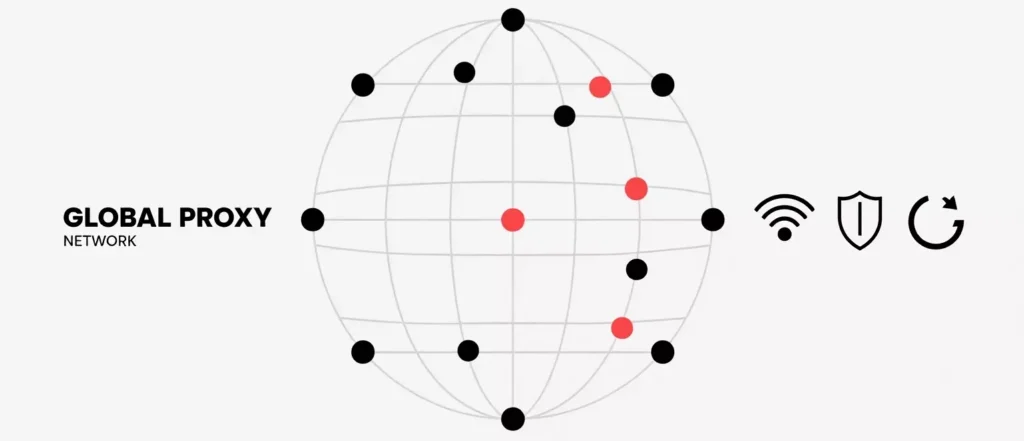Have you ever visited a website and seen content tailored specifically for your city, even though you never told it where you were? Or perhaps received a notification that your login attempt was detected from a strange location? The magic behind these actions, both helpful and protective, often relies on a powerful concept: the IP2 network, more accurately understood as the vast system of IP intelligence and geolocation databases.
This popular science tutorial will demystify the “IP2 network” by explaining how an IP address—your device’s unique digital postal code—can reveal a wealth of information about you, from your geographic location to the type of connection you’re using. We’ll explore the science of IP data, how it’s collected, and its profound impact on everything from cybersecurity to targeted marketing.

Part 1: Your Digital Postal Code – The IP Address
Every device connected to the internet—your smartphone, laptop, smart TV, or even a smart refrigerator—has a unique identifier called an IP address (Internet Protocol address). Think of it as your device’s return address for sending and receiving data across the internet. Without it, data wouldn’t know where to go!
IP addresses aren’t just random numbers. They are assigned by your Internet Service Provider (ISP) from large blocks of addresses that they own. And these blocks are meticulously documented. This documentation is the fundamental starting point for what we refer to as the “IP2 network” data.
Part 2: The Digital Detective – How IP Data Reveals Information
So, how does a simple string of numbers reveal so much? It’s all thanks to massive, constantly updated databases that map IP addresses to specific information.
Geolocation: This is the most common use. When your ISP is assigned a block of IPs, that block is registered to a physical location—often a city or region where the ISP’s infrastructure is located. When a website or service queries an IP geolocation database (the “IP2 network”), it can look up your IP address and determine your approximate geographic location, sometimes down to the city level.
Analogy: Imagine looking at a phone number. Even without knowing the person, you can tell the area code, which gives you a strong hint about their geographical region.
Connection Type: Is the IP address from a residential home, a business, a mobile carrier, or a data center? This information is also often registered with the IP block, allowing services to determine if you’re browsing from a typical home user’s connection or potentially from a server farm.
ISP Information: The database can identify which ISP owns the IP address, giving insights into the network being used.
Anonymity/Proxy Detection: If an IP address is known to belong to a VPN or proxy service, these databases can flag it as such.
Part 3: The “IP2 Network” in Action – Real-World Applications
The data derived from IP addresses forms the backbone of countless online services and security measures.
Content Localization: Websites deliver news, ads, and language based on your detected location (e.g., seeing local weather on a news site).
Fraud Prevention: Banks and e-commerce sites use IP geolocation to detect suspicious activity. A login attempt from a country you’ve never visited can trigger a security alert.
Cybersecurity: Identifying the origin of malicious attacks, botnet activity, or spam campaigns.
Geoblocking: Streaming services restrict content access based on your geographical location due to licensing agreements.
Targeted Advertising: Delivering ads to specific demographic regions.
Part 4: Managing Your Digital Footprint – The Role of Proxies
While the IP2 network concept allows services to pinpoint and classify your online presence, you are not without control. For many legitimate reasons—from protecting privacy to conducting global market research—users and businesses often need to manage their apparent location and connection type. This is where tools like proxies come into play.
A proxy server acts as an intermediary, routing your internet traffic through its own IP address. When you use a proxy, the “IP2 network” databases will see the proxy’s IP address, not your real one. This allows you to appear as if you are browsing from a different location or using a different connection type.
For example, a service like IPFLY provides access to a vast network of residential and mobile proxies across numerous countries. When a business uses IPFLY, they can select an IP from, say, Tokyo, Japan. The “IP2 network” would then identify that traffic as originating from a residential user in Tokyo, allowing the business to conduct market research or verify ads as if they were physically present there. This demonstrates how sophisticated IP intelligence can be managed for precise control over online identity.
Hey folks! Wondering how to use proxies without mistakes and grab the latest tricks? Head straight to IPFLY.net for great services, then hop into the IPFLY Telegram community—we chat tips daily, even newbies can catch on fast. Don’t wait, join us!

The Invisible Intelligence of the Internet
The “IP2 network,” understood as the powerful ecosystem of IP intelligence and geolocation, is an invisible force shaping our online experience. It’s a digital detective, constantly analyzing your device’s postal code to understand who you are, where you are, and how you’re connecting. While this data fuels everything from personalized content to critical security measures, understanding how it works also empowers you to manage your own digital footprint, using tools to enhance privacy or conduct operations across the global internet with precision.


